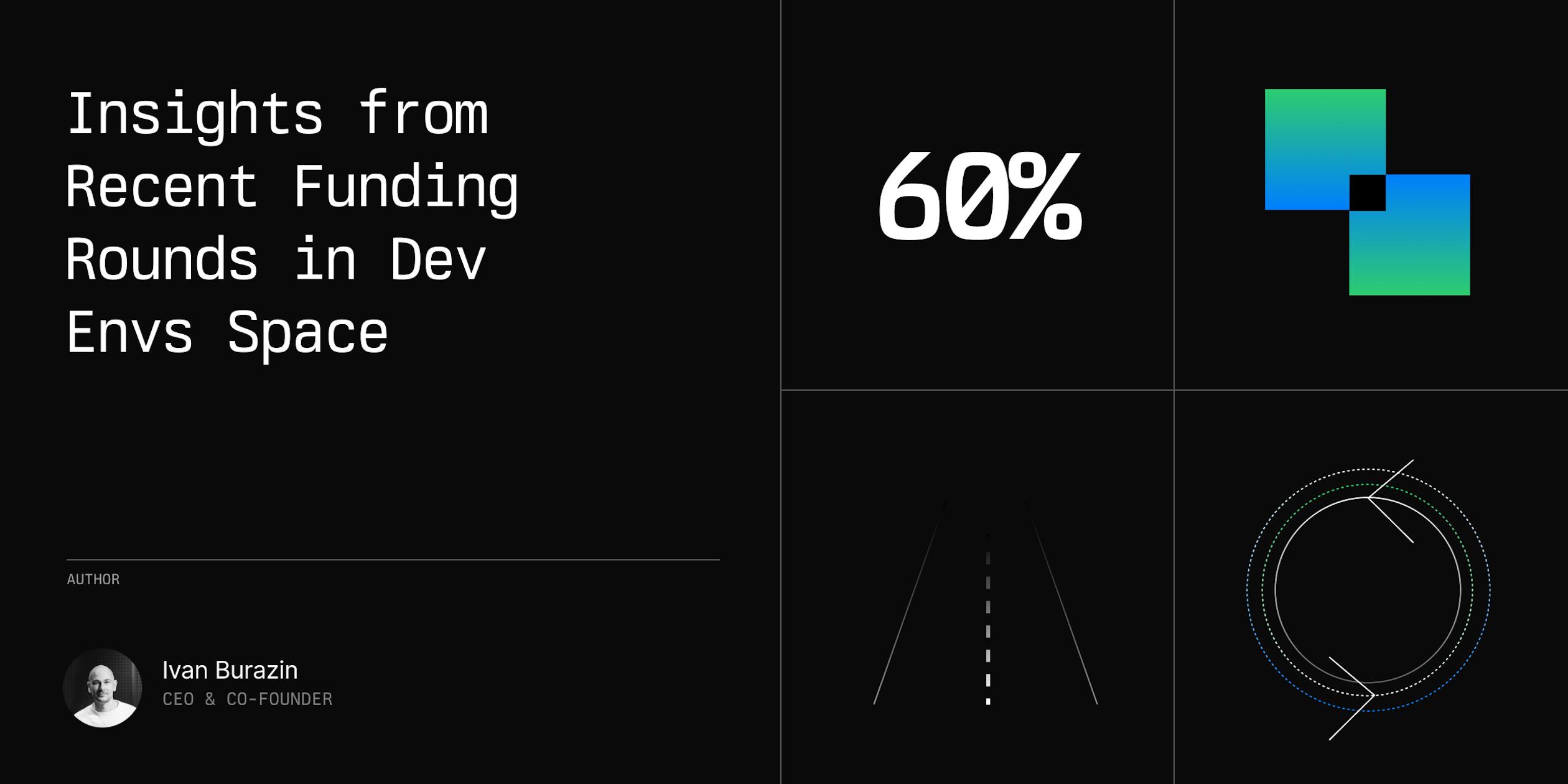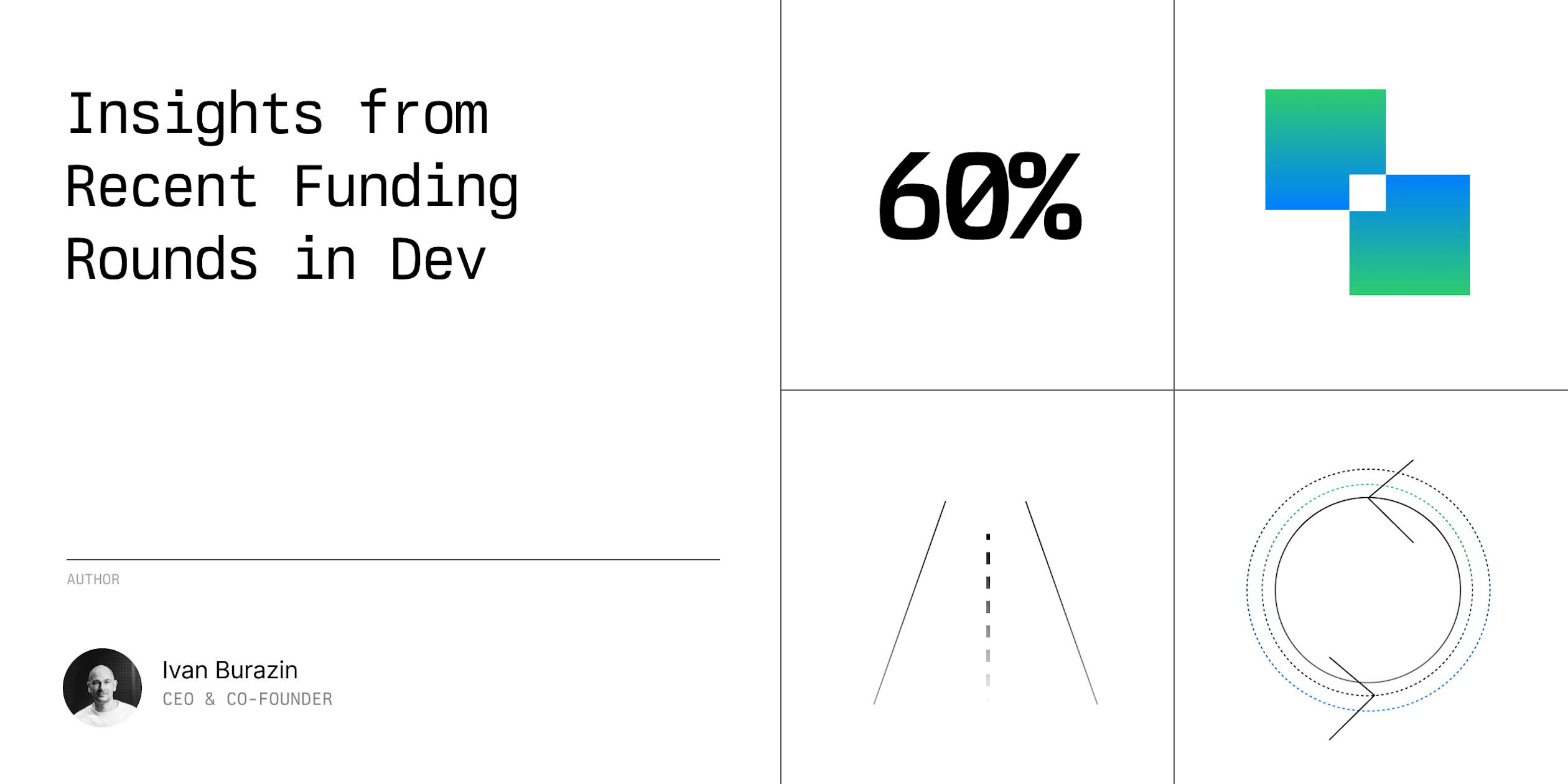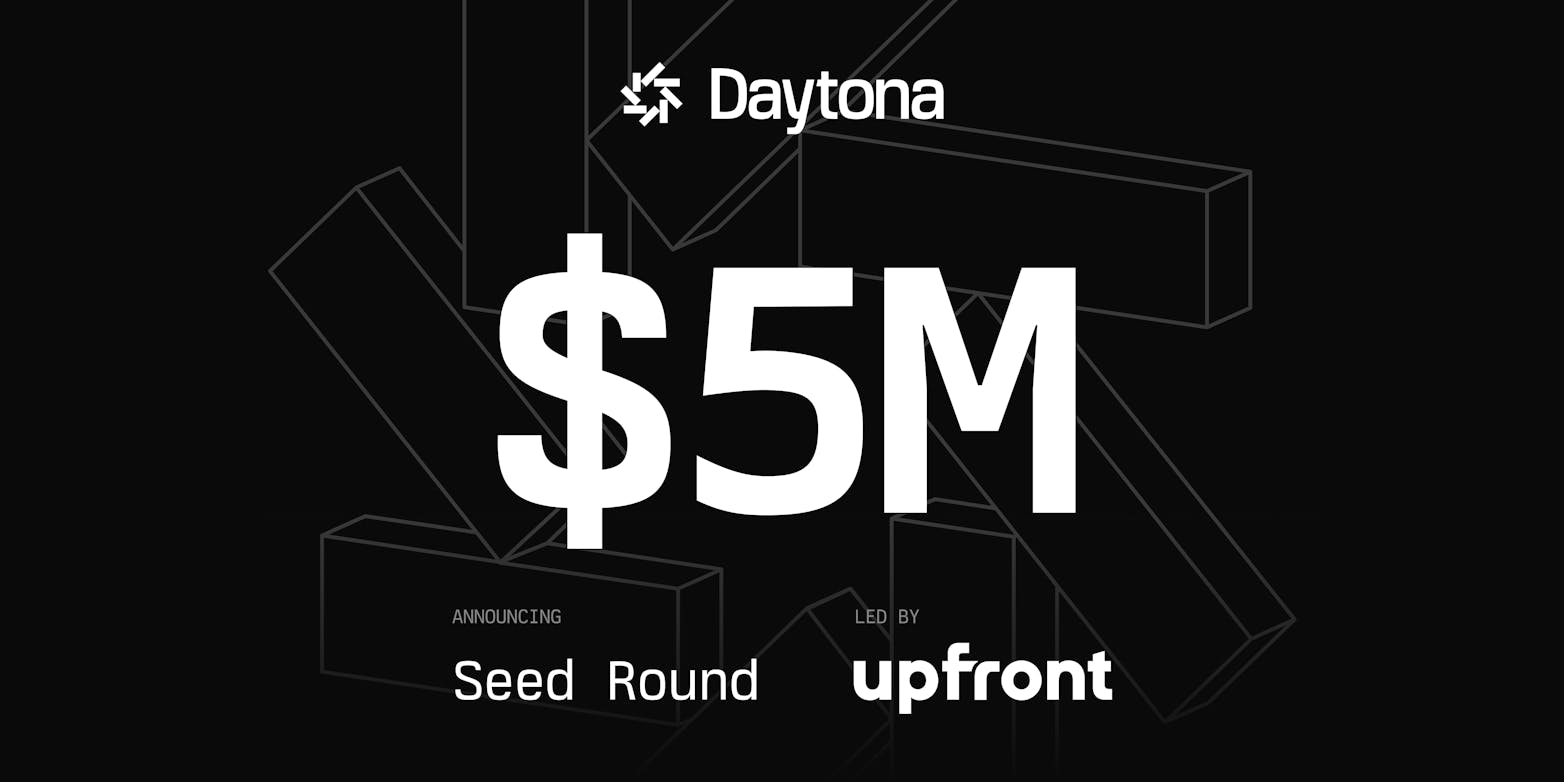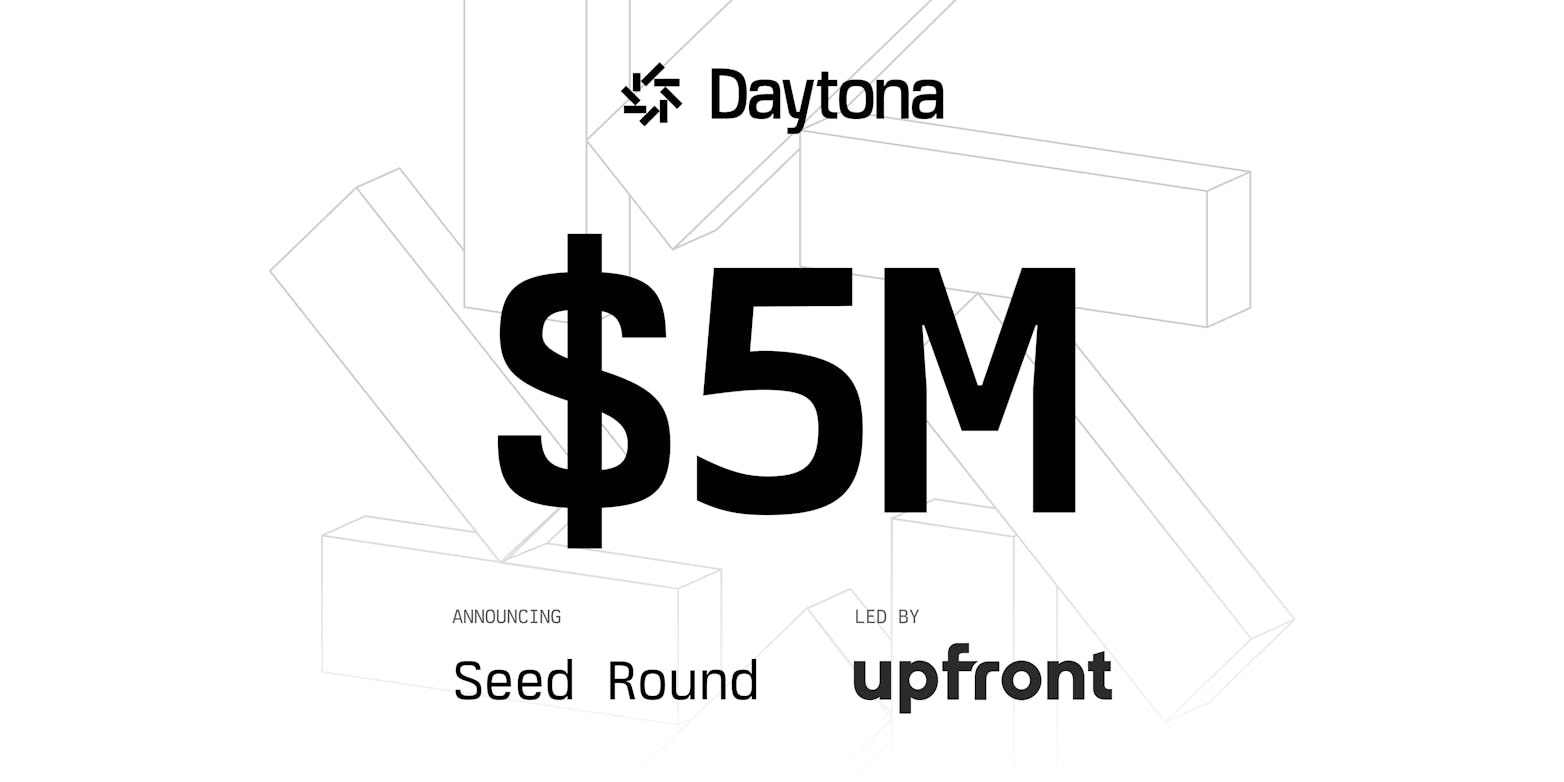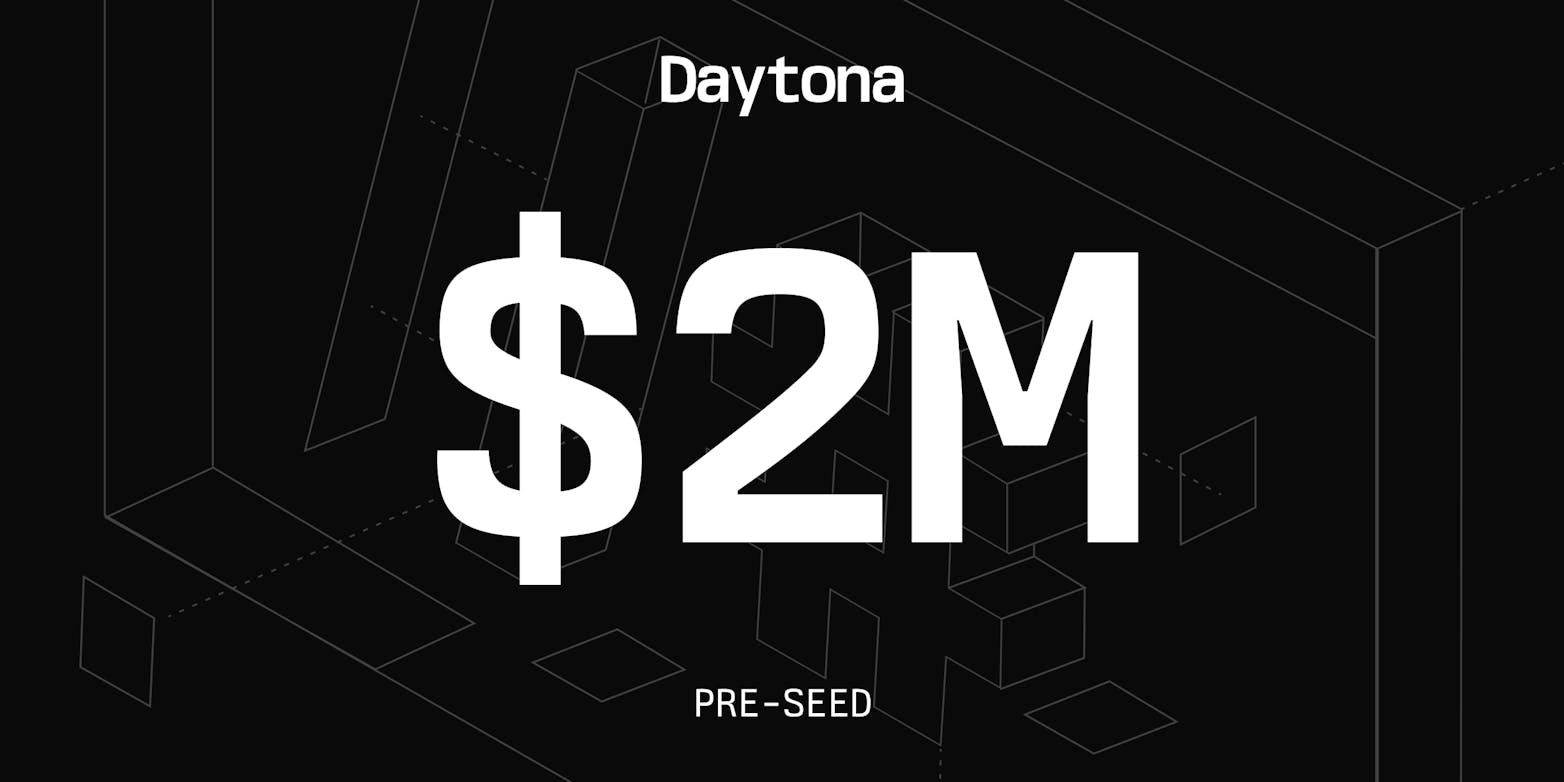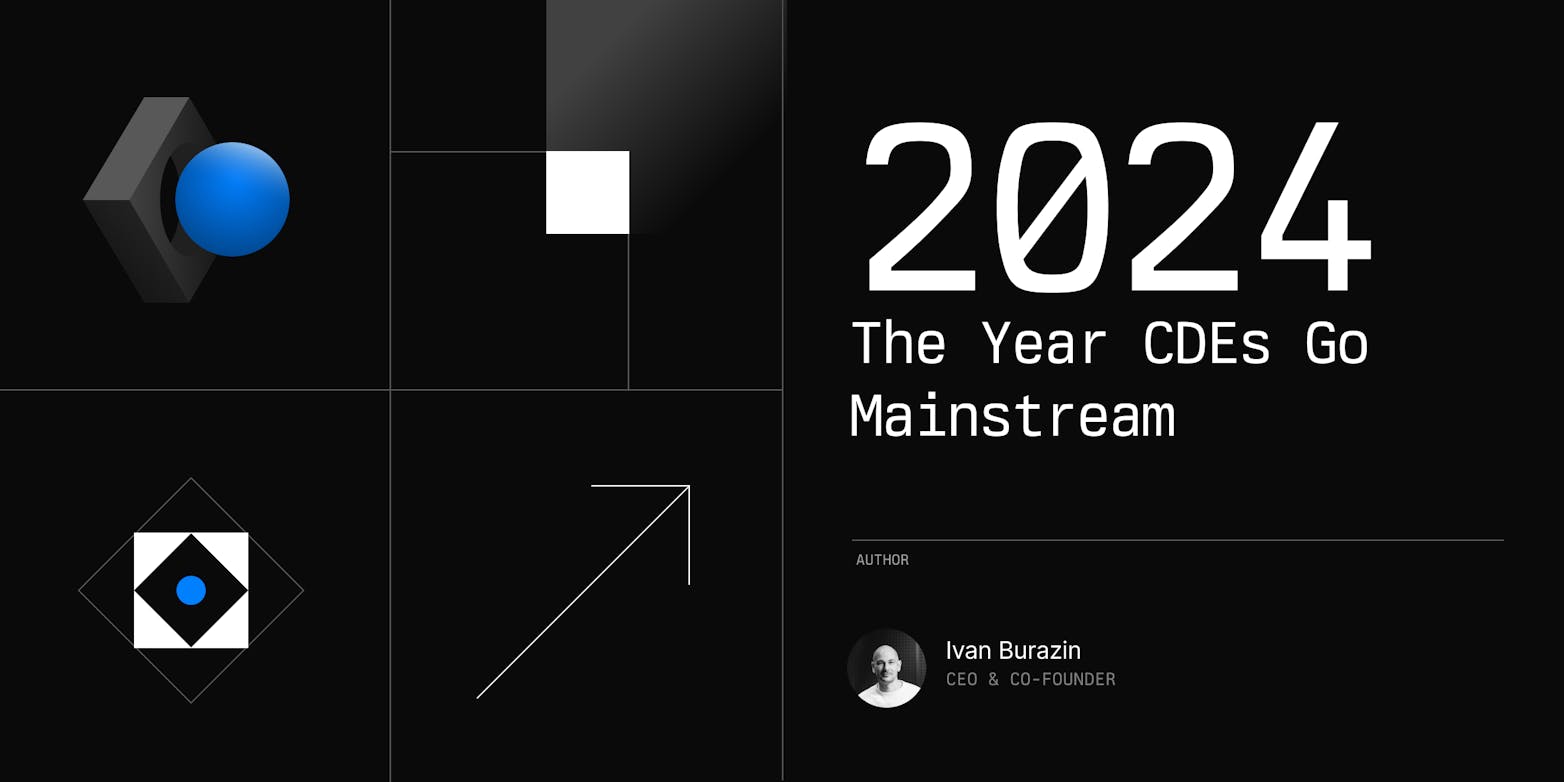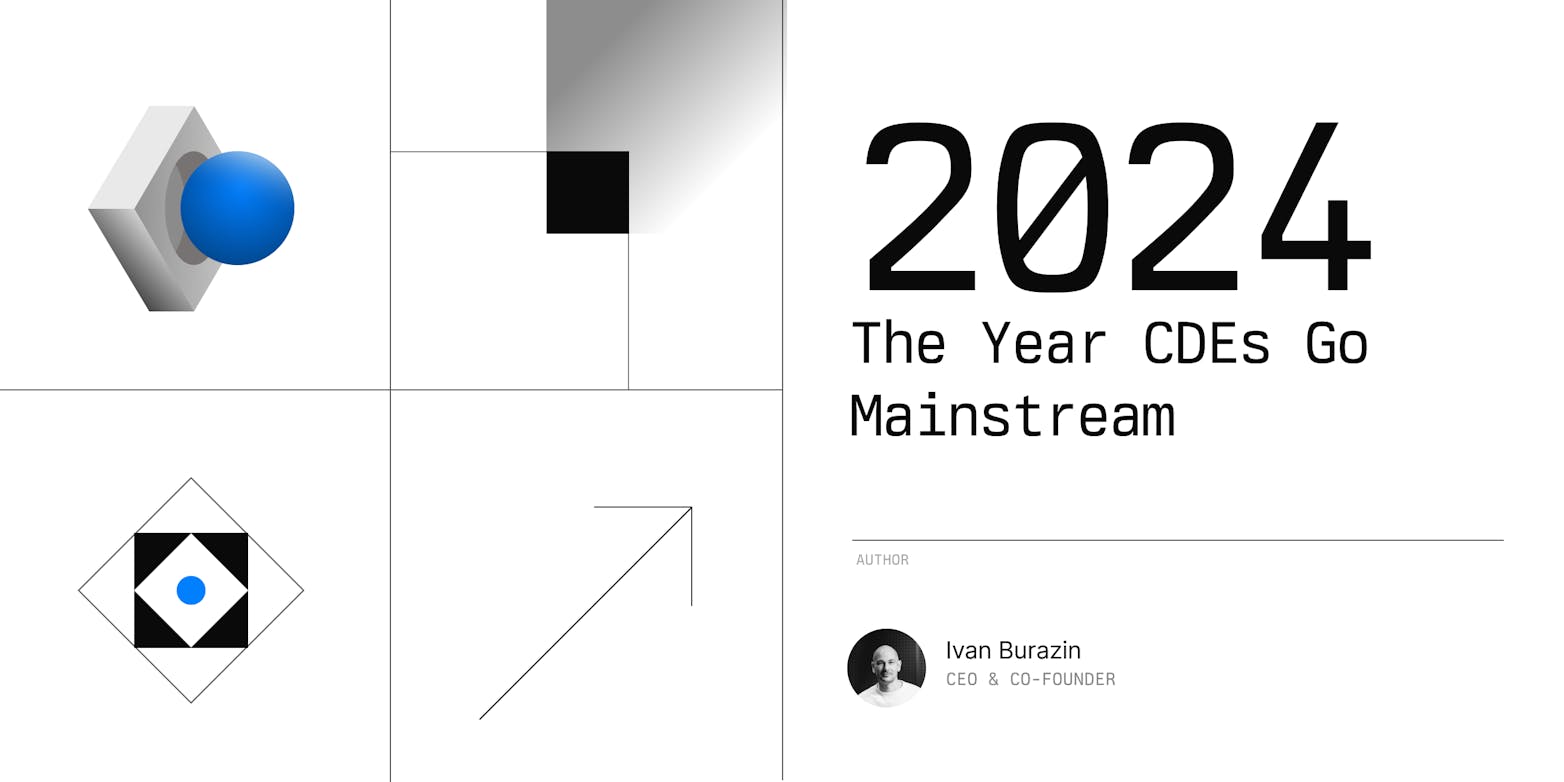In a twist of fate, two key players in the development environment management space announced substantial funding on the same day, signaling a unified front in the push towards smarter development solutions.
Coder secured $35 million in a Series B2 round led by Georgian, while Daytona raised $5 million in seed funding orchestrated by Upfront Ventures. This wave of investment not only underscores the escalating importance of development environment management but also offers a glimpse into the promising future.
... by 2026, 60% of cloud workloads will be built and deployed using CDEs
Gartner
The timing of these funding rounds follows Gartner's recognition of cloud development environments (CDEs) in its Hype Cycle for Platform Engineering. Gartner, a leading research and advisory firm, has released its latest Hype Cycle report, which suggests that CDEs are expected to provide significant value and achieve widespread adoption within the next five to 10 years. Specifically, Gartner predicts that "by 2026, 60% of cloud workloads will be built and deployed using CDEs."
This recognition further validates the growing significance and disruptive potential of CDEs, as we have already discussed in greater detail in the article: "Gartner's Perspective and Future Implications."
The Need for Efficient Development Environments
As software development becomes increasingly complex and collaborative, the need for efficient and simplified development environments has never been more critical. Developers often face challenges such as inconsistent configurations, prolonged onboarding times, and the notorious "works on my machine" problem. These issues can significantly hinder productivity and slow down the development process.
CDEs have emerged as a promising solution to address these challenges, offering several key advantages. These include consistent and ephemeral environments, streamlined onboarding, isolation and security, collaboration, flexibility, scalability, developer velocity and business continuity. The solutions provided by Coder and Daytona align with these advantages, aiming to empower developers and drive the future of development environments.
The Hybrid Approach and Empowering Developers
While the cloud offers numerous benefits, it is essential to recognize that the world of development is not entirely cloud-centric. Many developers still rely on the power and flexibility of local computing, especially with the constant advancements in hardware. As Kenneth Auchenberg, a prominent figure in the developer tools space, stated in a recent tweet, "I remain steadfast in my belief that the world is more hybrid than cloud-only." Source.
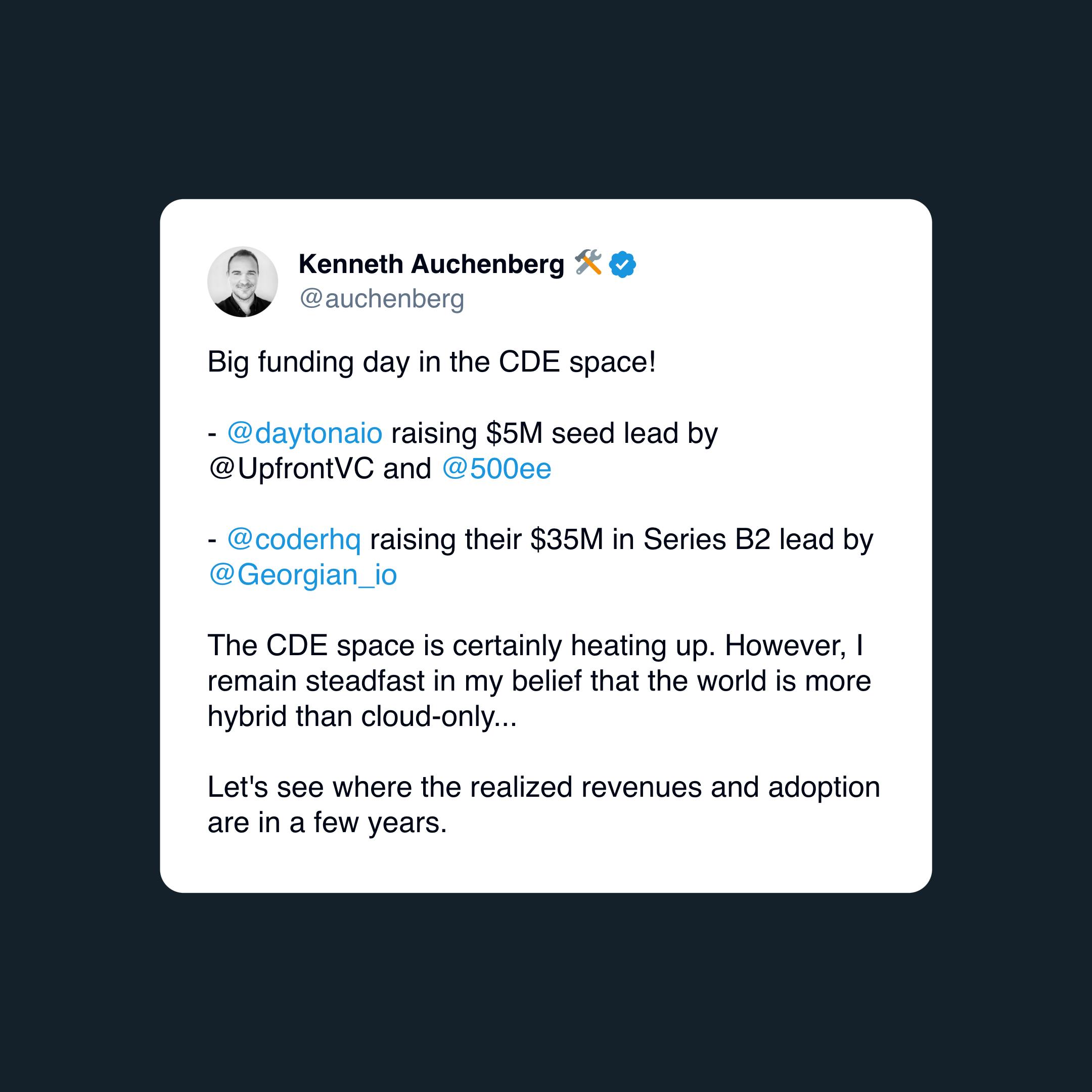
Daytona, with its focus on hybrid development environments, is well-positioned to lead this trend. By providing a solution that seamlessly integrates local and cloud-based development, Daytona empowers developers to work in the environment that best suits their needs. This hybrid approach ensures that developers can take advantage of the scalability and collaboration benefits of the cloud while still harnessing the power of local computing when necessary.
The Road Ahead and the Future of Standardized Development Environments
As the development environment management market continues to evolve, it is clear that the future lies in solutions that prioritize developer productivity, flexibility, and accessibility. The recent funding rounds serve as a testament to the industry's commitment.
The evolution of Cloud Development Environments (CDEs) into comprehensive and Standardized Development Environments (SDEs) that encompass the entire application lifecycle is transforming the future of software development. This vision aligns with the groundbreaking advancements of Daytona, which are paving the way for a more productive and efficient development process.
Moving forward, we can expect to see further advancements in hybrid development environments, with a focus on seamless integration between local and cloud-based setups. The adoption of generative AI and other cutting-edge technologies will also play a significant role in shaping the future of development environments. Solutions such as Daytona, which enable the safe integration of AI capabilities into development workflows while addressing safety and security concerns, will be crucial for helping developers harness the power of AI responsibly and effectively.
Conclusion
The development environment management space is undergoing a transformative shift, driven by the need for efficient, collaborative, and accessible solutions. This shift is primarily powered by several significant inflections: the rising complexity and collaborative nature of software development, the recognition and adoption of Cloud Development Environments (CDEs) as highlighted in Gartner's Hype Cycle, and the pressing need to eradicate longstanding issues such as inconsistent configurations and prolonged onboarding times.
Another major inflection is the emergence of AI, which elevates the need for enhanced security and control while simultaneously democratizing the development process. The incorporation of AI capabilities into development workflows introduces new dimensions of risk and opportunity, making it imperative to address safety and security concerns effectively.
The recent funding rounds for Coder and Daytona, coupled with Gartner's recognition of CDEs as an emerging technology on the rise, underscore the industry's acknowledgment of these pivotal inflections and their potential for driving innovation in this field.
As we look ahead, it is evident that the future of development environments lies in a hybrid approach that empowers developers to work in environments best suited to their needs. By embracing this approach and continuing to invest in developer experience we are paving the way for a more productive, secure, and efficient future of software development.

